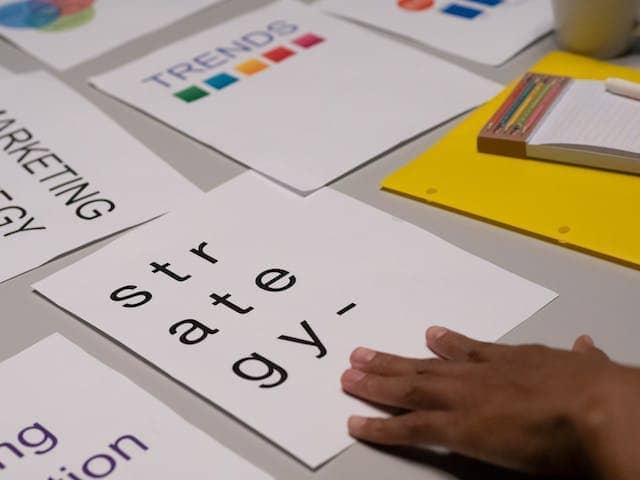NFTs and Your Brand: When and How to Explore New Channels

NFTs and other evolving types of — well, OK, let’s call them “channels” — may be an area your brand wants to invest in, but might also not be the smartest idea. Whether you’re evaluating the benefits of creating your own brand’s NFT now or jumping into any new marketing channel or strategy that develops in the future, you need a framework to make a quick yet still informed decision.
Take advantage of the possibilities offered by a new channel or marketing strategy while minimizing the risks. Try following a fairly straightforward formula, tailored to your own unique circumstances:
- Do your research: Identify the nature of the new channel and how it operates. Learn the basics of the new channel’s foundation. Do this whether that’s a new technology, business model, audience, or a different set of operating rules.
- Evaluate the drawbacks: Each new strategy or channel will pose a set of drawbacks and someone will have to bear the cost of those drawbacks, whether individually (as in the case of added legal or financial risk) or societally (as with environmental damage or societal costs of misinformation).
- Outline the advantages: What good can possibly flow from your investment into or adoption of this new channel or strategy? List out those benefits, both tangible and intangible.
- Perform a risk assessment: Evaluate the potential worst-case scenarios and what each would mean to your brand. Balance the drawbacks against the advantages to get a good picture of what you’re likely to face no matter what the outcome turns out to be.
How three brands got creative with NFTs
Before you can execute on an idea, you need to actually have a solid idea in the first place, right? But how do you get from a wholly new thing like NFTs or a completely new social platform to a value-added way to integrate it into your marketing plan?
Let’s take a look at NFTs as an example of how you can creatively put new concepts into play to promote your brand. As you can tell from the following three use cases, NFTs have been used as charitable fundraisers and as more straightforward promotions.
1. Taco Bell
In March 2021, Taco Bell announced on Twitter that it would offer NFTs based on taco-themed GIFs and graphics. Using the NFT marketplace Rarible, it sold all available 25 NFTs in less than an hour. For the original owner, the fast-food chain also had a $500 gift card. And, all proceeds were directed to its foundation to fund the Live Más scholarship.
2. Pizza Hut
Also in March 2021, Pizza Hut Canada offered the first “NFP” — that’s non-fungible pizza, of course — in a collection of “1 Byte Favorites” on Rarible. The pizza chain took a delayed-drop approach to the release of these NFTs of some of its top-rated recipes, dropping a few each day to create more interest. The collection was designed to promote the restaurant’s $10 Favorites promotional campaign.
3. Campbell’s Soup
In the summer of 2021, Campbell’s Soup announced a new venture in which it planned to partner with artist Sophia Chang to create NFTs celebrating its iconic red, white and gold soup can labels. The collection included 100 NFTs designed by Chang based on the label art and was available for purchase via NTWRK, a video shopping platform well known for handling sales of NFTs. In the same way Taco Bell did, Campbell’s also turned the venture into a charitable act. They directed all proceeds to Feeding America to fight food insecurity.
What’s an NFT anyway?
NFT stands for non-fungible token. That probably doesn’t do much to illuminate the nature and value of an NFT, though, so let’s break it down a bit further.
Non-fungible simply means that it’s one of a kind. It can’t be reproduced or traded with others of its kind and still maintain its intrinsic value. For example, if I have a $10 bill, and you have two $5 bills, we can make a fair and equal trade. After we exchange our respective notes, we still have the value of what we started out with. The same is true of bitcoin or Ether units.
But that’s not true of other types of property, such as artwork. If I have a Degas painting and you have a Jackson Pollock (or even a different Degas!), we can certainly trade our pieces but we won’t end up in the same situation as before the trade. One isn’t the same as another.
Token, in this context, means that this non-fungible asset — the artwork, for example, or a digital asset like a graphics file or a tweet — has been reduced to a digital form that can be easily bought, sold, or otherwise traded. Tokenizing is a key part of what makes cryptocurrencies tradable while the use of blockchain technology reduces the risk for fraud.
Examples of NFTs
What can be turned into an NFT? So many things. Consider these examples:
- Remember Jack Dorsey’s very first tweet on Twitter? He recently sold it for almost $3 million as an NFT.
- In an auction run by Christie’s, graphic designer and artist Beeple sold a compilation of daily images dating back to 2007 for a mind-blowing $69 million to a Singapore cryptocurrency investor.
- Musician Grimes sold an NFT of a short video for over $300,000.
So, therefore, the underlying purpose of the NFT structure can vary. In one primary use case, brands and owners can use the NFT process to reduce a physical, real-life asset into something digital yet still secure enough to trade.
However, don’t confuse an NFT with any run-of-the-mill digital file. Sure, you can right-click on any image or download any video and you’ll technically “have” it through possession. But it’s not the same as purchasing an NFT because downloading digital files doesn’t transfer ownership.
For an analogous example, consider printing off a digital image file of a Degas painting. That’s not the same as actually purchasing the Degas painting itself, nor does it transfer any rights of ownership as buying the artwork would.
Where blockchain comes in
The blockchain technology involved in NFTs serves to create and bestow a unique identifier on the NFT, making it unique and less susceptible to fraud. As a digital representation of some other kind of asset or property, it must be unique in order to convey some kind of value in owning it.
NFTs are also “extensible.” This simply means you can use two NFTs to create yet another, third NFT that’s wholly unique from the others.
Thanks to the security offered by the use of blockchain technology, NFTs have also been used in more serious business transactions, such as real estate deals and transfers of private equity holding. Parties to these transactions can also combine various NFTs into one deal, all backed by the security of blockchain. They’re also used to support trading of collectibles as well as transactions of digital property in the metaverse.
So blockchain helps reinforce trust by making NFTs identifiable and that, in turn, helps make assets more easily traded, sold, and bought. This results in a more efficient market by removing the middlemen and agents, which leads to more accurate pricing as well as higher security in the transaction itself.
Drawbacks of NFTs
If NFTs make it simpler and safer to deal, trade, and own all kinds of property and art, both digital and analog, then what are the drawbacks? Why isn’t everyone dealing exclusively in NFTs? And why were so many media outlets claiming the NFT boom went bust last year?
To start with the drawbacks, there’s the potential environmental damage caused by the process of mining the cryptocurrency used to buy NFTs. That process results in greatly elevated releases of carbon dioxide That leads to a hotter planet and a higher degree of climate change. Some but most likely not all of those emissions may be offset by investments in carbon recapture technology and other methodologies. That may not be a controversy you want your socially conscious brand to wade into.
NFTs also carry a somewhat questionable intrinsic or resale value. Of course, that’s true of any piece of fine art, too. You might pay $100,000 at an auction for that Degas sketch but will it have increased in value when you sell it again 10 years down the road? An NFT’s value may vary wildly over time. Many artists and traders think that won’t happen — that the value will only increase — but others believe the exact opposite is more likely.
Finally, the market for NFTs is still fairly immature and volatile. You might find several ready and willing buyers who will pay top value for your NFT when you’re ready to sell — or you might not, as evidenced by that mini-bust in 2021. Most people still don’t understand NFTs and its underlying technology well, and confusion can lead to bad trades or reluctance.
What’s so great about investing in a new channel?
Given the potential risks, why would anyone want to embrace a new channel as an early adopter?
First and foremost, expanding your channels helps you broaden your reach. Depending on any single channel too much is a dangerous thing. Not everyone in your target audience segments will naturally participate in a specific channel. The more you diversify your efforts, the likelier you are to reach more of the different customer personas you’re targeting. Diversification into new channels helps you build a more solid marketing foundation and reduces the negative impact should the unexpected occur with another channel you rely on.
There’s also the intrinsic value of more access to new data. Any time you branch out into new marketing strategies and channels, you produce or gain access to data that you otherwise wouldn’t have. Whether the new channel or strategy works or not, you’ll learn something new about your targeted audience. When you know more about the individuals in your market, you can better connect with them and help convert them into paying customers or repeat business.
Finally, don’t discount the early adopter legitimacy bump. Being one of the first brands to use a new channel or strategy carries a certain cachet, especially if you do it well. This can lead to gaining some momentum that could even follow your brand outside of that channel — leading to more Instagram or Twitter followers, for example.
Evaluate the next new thing carefully before you leap
The bottom line is that whatever new channel you’re considering will carry both potential risks and rewards. The essential question in deciding whether to become an early adopter of NFTs or other new marketing strategies and channels is to accurately estimate your ROI. Of course, before you can determine your return on investment, you must also know what you’ll be required to invest, so first estimate your jumping-in costs, in terms of money, effort, skill sets, and opportunities you’d have to forego.
The answer will also depend on your business model and goals. The perspective of an artist or other type of creator will most likely differ from that of a larger B2B brand and will definitely result in a different set of costs and potential benefits.
Thanks for reading! Do you want to create thought leadership articles like the one above? If you struggle to translate your ideas into content that will help build credibility and influence others, sign up to get John’s latest online course “Writing From Your Voice” here.



